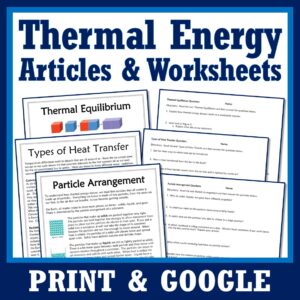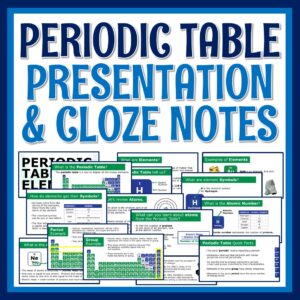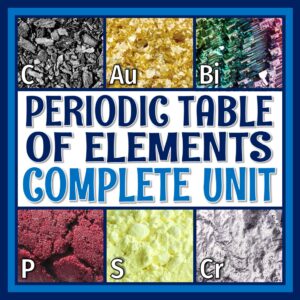Evidence of a Chemical Change Activity: 8 Mini Labs
$5.50
Students investigate SIGNS OF A CHEMICAL CHANGE with 8 simple labs. Each activity only uses inexpensive grocery store supplies.
Grades 7 and Up
Choose from 8 different reactions – or use them all as a stations activity – to let students witness different types of EVIDENCE of a chemical change firsthand! These labs use easy supplies but produce reliable results!
⭐ Get this evidence of a chemical change activity at a discount in our Physical & Chemical Changes Unit!
The types of evidence of a chemical reaction that students will experience are:
- Formation of a precipitate (2 reactions to choose from)
- Temperature increase (3 exothermic reactions to choose from)
- Temperature decrease (2 endothermic reactions to choose from)
- Gas production (4 reactions to choose from)
- Color change (1 reaction)
Each of the 8 Reactions Comes With:
- A station card that gives background information about the reactants, the chemical equation, a materials list, and simple instructions for students to follow to complete the reaction. (These station cards are reusable and are not written on.)
- A student worksheet that includes analysis questions about observations, a CER, identifying the reactants and products, and more.
This Download Includes:
- 8 Stations Cards, one for each reaction
- 8 Students Analysis Worksheets, one for each reaction
- Detailed teacher notes and tips
- Supplies checklist
- Answer keys
Easy Supplies: (Remember, you don’t have to do them all!)
- hydrogen peroxide, balloons, yeast, lemon juice, baking soda, Epsom salt, sodium carbonate (AKA washing soda in laundry section of supermarket), stirrers, vinegar, bleach, steel wool, plastic baggies, driveway ice melt
- One of the labs uses pH paper but still provides evidence of a chemical change without it.
Teacher Notes:
- Please note that this resource is not editable.
- Related standard: NGSS MS-PS1-2 and MS-PS1-5
- Related standard: NGSS Science & Engineering Practices: Planning and carrying out investigations; Analyzing and interpreting data; Engaging in argument from evidence
Be the first to review “Evidence of a Chemical Change Activity: 8 Mini Labs” Cancel reply










Reviews
There are no reviews yet.